When the pain and desperation reached unbearable levels, Anne Ketlo dialed 911. The dispatcher asked her location and was startled to hear the answer. Ketlo was calling from her hospital bed.
Ketlo, who is from the Nadleh Whut’en First Nation, was admitted to the University Hospital of Northern British Columbia in Prince George for knee surgery in September. She describes waking up after the operation in agony. A nurse gave her two regular strength Tylenol and told her she could have two more in four hours.
For 17 hours, Ketlo says, she “cried and begged” for pain relief beyond the Tylenol, but nurses said they didn’t have authorization to provide it.
It was around 2 a.m. when Ketlo finally called 911 from her room at the hospital. The voice on the other end of the phone was “in extreme shock. They didn’t know how to respond,” Ketlo says. “I was trying to find a doctor to change the orders so that I can get access to painkillers.”
Ketlo would later describe in a statement to B.C.’s Patient Care Quality Office how what was supposed to be a place of healing left her emotionally shattered by “unhelpful, rude and racist” treatment.
“I thought once I could get through this without crying,” she says, her voice breaking over the phone as she reads the statement. “I’m on my way to healing.”
Over the past year, there has been a rising chorus of complaints about anti-Indigenous racism in B.C.’s health-care system.
They include being denied pain medication and treated dismissively by medical staff, who assume that Indigenous patients are drunk or drug-seeking when they access care.
The allegations were confirmed after B.C.’s Health Ministry launched an investigation in July into anti-Indigenous racism in emergency rooms.
The resulting In Plain Sight report, released in November, found “widespread and insidious” anti-Indigenous racism in health care throughout the province.
Nearly six months after the report was made public, no legislative changes have been introduced, though B.C. Health Minister Adrian Dix told The Tyee his ministry has taken “significant and immediate action” and aims to “change the power dynamic” in who fields and responds to complaints of racism.
The author of the November review, former justice Mary Ellen Turpel-Lafond, released a followup report that ties racism to worse health outcomes and early deaths for Indigenous people, especially women.
And a number of accounts of racist treatment gathered by The Tyee through interviews and court filings portray a defensive, broken medical culture that inflicts deep psychological wounds as well.
‘She laughed at me, shook her head and just walked out’
More than a third of Indigenous people in B.C. live in the North, despite the area being home to only six per cent of the province’s overall population. Its major centre, Prince George, is a regional hub, drawing patients who come from hundreds of kilometres away seeking health care, often from rural, remote or Indigenous communities. The effects of anti-Indigenous and systemic racism are especially pronounced in the region.
In the Northern Health Authority, 52 per cent of non-Indigenous and non-racialized respondents said they had witnessed interpersonal racism in health care, more than any other region in the province. Vancouver Coastal Health was the next highest at 45 per cent.
In Plain Sight reported that across the province, 84 per cent of Indigenous patients and more than half of Indigenous health-care workers had experienced racism in the system.
But the statistics don’t convey the suffering, fear and damage done.
The Tyee spoke with patients who shared their stories of anti-Indigenous racism at the University Hospital of Northern BC. They described dehumanizing treatment and a sense of powerlessness. And they reported being denied medication despite pleas for pain relief.
At times, some said, they questioned their own sanity, as doctors and nurses refused to acknowledge their experience and dismissed their pain or other symptoms.
And at nearly every turn, the patients said they had few options to report their experiences or find accountability.
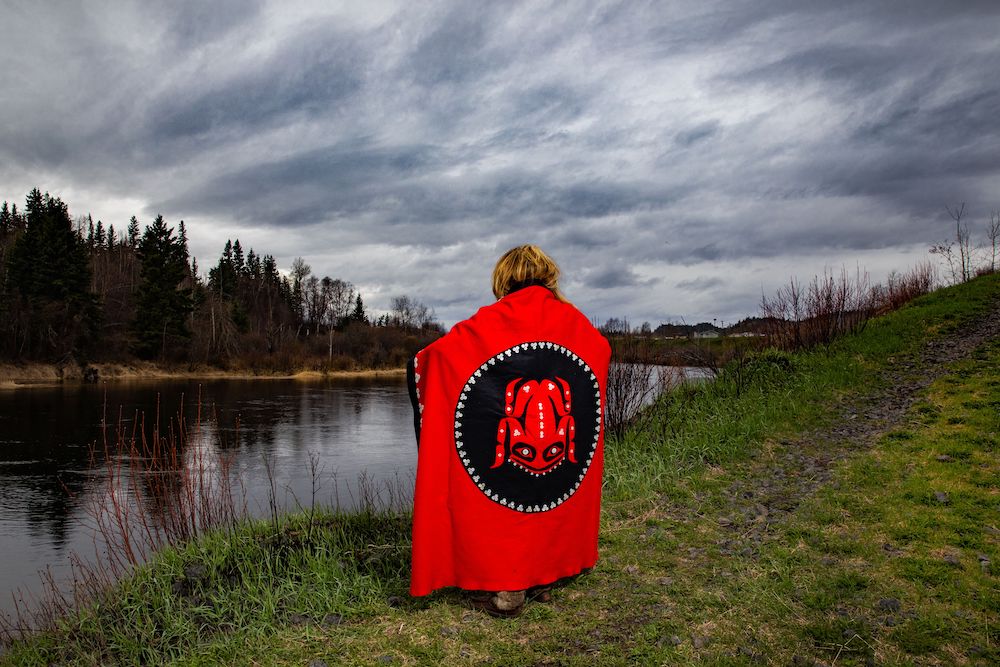
Some, like Ketlo, asked to be released early to escape the racism, despite the risks. Others reported being reluctant to return to northern health-care facilities for needed followup treatment, with some opting to travel long distances to receive care in Lower Mainland centres.
The In Plain Sight report found Indigenous people in the Fraser Health region, for example, were more likely to express confidence their care would be equitable than respondents in the North or on Vancouver Island.
Ketlo’s statement to the Patient Care Quality Office, which fields complaints about health-care experiences, recounts her sense of powerlessness and fear when she attempted to raise concerns about her care. When Ketlo said that she would file a complaint about her treatment by a male nurse, she said in her statement, another nurse warned that if she complained, her care would likely get worse.
By day four of her stay, she was begging for early release.
“I left because I was seriously concerned for my life and my well-being, and I knew it wasn’t going to get better,” she says.
Geraldine Thomas-Flurer describes a similar experience at the Prince George hospital a year earlier. She was admitted on Oct. 30, 2019, for a procedure that was serious enough to require a one-week hospital stay. But four or five days into her recovery, she demanded early release.
Thomas-Flurer says she spent much of those days in excruciating pain.
“I was crying, and I was asking them to give me pain medication. The nurse, who came in to check on me, I asked her — and I was crying while asking her — and she laughed at me, shook her head and just walked out,” she remembers.
“I mean, who laughs at someone in pain?”
The perception that Indigenous patients are exaggerating pain or their need for medication is not unique to northern B.C., says Sarah de Leeuw, a professor and Canada research chair in humanities and health inequities at the University of Northern British Columbia’s Northern Medical Program. It’s been well-documented in other regions.
“It’s a very, very common complaint of Indigenous women who speak about their substandard care in the health-care system,” de Leeuw says. “It’s a very common presentation of Indigenous women who are retelling their stories of being racially profiled.”
The attitudes go hand-in-hand with the stereotype that Indigenous people are “drug-seeking,” a trope that dates as far back as the original Indian Act, de Leeuw says, and is perpetuated by media reports that re-enforce Indigenous stereotypes around substance abuse.
“Drug-seeking” is among the common stereotypes highlighted in the In Plain Sight report, which lists inappropriate pain management as a common form of discriminatory treatment and poor-quality care.
“At times, pain was acknowledged but treatment was withheld, sometimes with an explicit reference to the stereotype that Indigenous people were drug-seeking or somehow felt pain differently,” the report says. “At other times, the pain management offered was simply ineffective.”
It found that 19 per cent of non-Indigenous health-care workers surveyed had witnessed Indigenous patients being denied needed medication. For Indigenous workers, that number rose to nearly half at 49 per cent.
It was also common for health workers to assume patients were drunk or ask them about substance use.
“The impacts of these assumptions ranged from being asked the same question about their use of substances during a visit, to under-medicating pain due to assumptions about addictions, to taking concerns and symptoms less seriously based on the assumption that the patient was exaggerating in an attempt to get access to pain medication,” the report says.
The issue appeared to affect women in particular, the report adds, with only 31 per cent of Indigenous respondents saying their medication needs are consistently met.
‘They don’t see me’
Thomas-Flurer, who lives in Saiku’uz First Nation near Vanderhoof, says it’s a common experience for Indigenous people in the North.
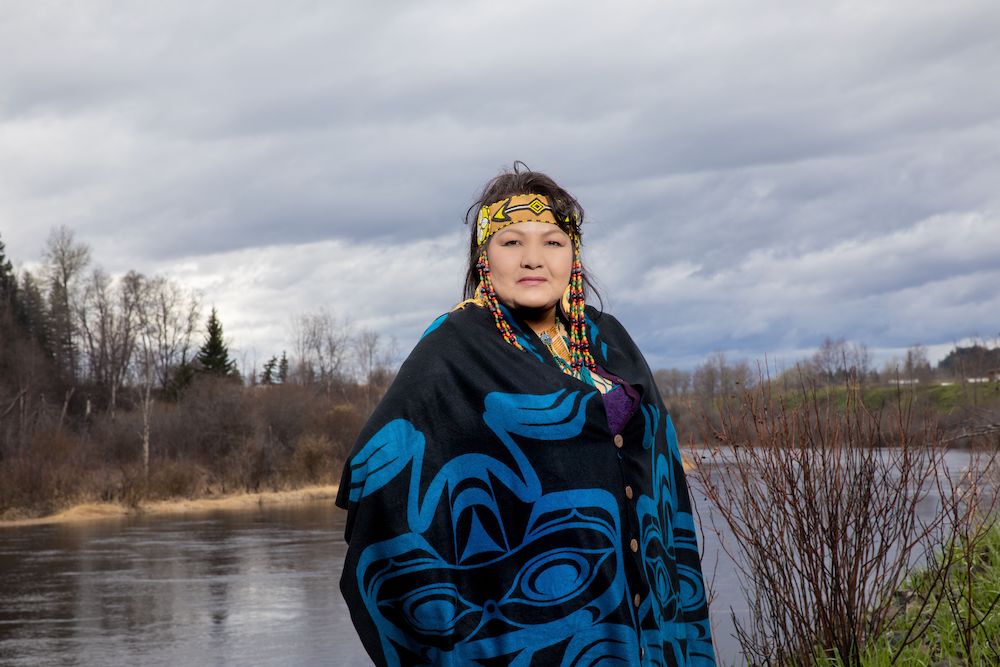
“They treat Native people like we’re all the same and like we’re drug-seeking. They really don’t really want to help us too much. They don’t take us very seriously,” she says.
“They don’t see me. They don’t see behind the person that’s laying in bed, cut open and in pain. You feel ‘less than.’ You feel like nothing. There are just no words to explain how dismissed you feel. You even question your own sanity.”
Joanne, who is from the Wet’suwet’en Nation, has had health-care staff question her and family members about substance abuse as they sought medical help. A few years ago, she saw a doctor in Vanderhoof about a scratched cornea.
“The first question the doctor asked when she saw me was whether I drank every day,” she says.
At the time, she laughed it off as a bizarre thing to ask during an eye exam. But a more recent experience at the Prince George hospital in October revealed the more serious side of racial profiling.
Joanne, whose name has been changed to protect her personal health information, had already been admitted to the Prince George hospital for an inflamed gallbladder when it suddenly ruptured the following morning. While she says her initial treatment and surgery went well, she describes her post-op recovery treatment as dehumanizing and disempowering.
“I was whimpering and crying and moaning like a baby. I guess they see that a lot, but they don’t know that I don’t do that,” says Joanne, who’s had five children, three of them homebirths. “I feel like I can handle pain pretty well.”
As she begged nurses for relief, she says she was told to “tough it out” with an oral pain medication that wasn’t working.
In addition to feeling vulnerable and powerless, she says her dignity was taken away. Her request for a shower was never fulfilled and she was forced to wear the same soiled gown she’d been given when she arrived at the hospital.
“I hadn’t eaten in probably six days, hadn’t bathed in as many. I hadn’t slept in four days from when I was out from the surgery. I was just worn down and exhausted and scared and hated the system,” she says. “I felt so vulnerable.”
When her doctor told the nurses she’d be released early, she says she heard them cheer and high-five in the corridor outside her room.
Joanne told a nurse, who was a young person of colour, how sad and abused she felt.
“She just started crying,” Joanne says. “Then she said to me, ‘Sometimes they scare me.’”
Mona Johnson says decades of mistreatment by health staff in Prince George have eroded her willingness to go to the hospital and cost the life of at least one close friend.
A cervical cancer survivor, Johnson pressed to ensure her care would take place in Vancouver, where she said staff are kind, competent and helpful. “If I’m going to have surgery, I will have it in Vancouver.”
Johnson, a member of the Nak’azdli Whut’en First Nation, said the racist assumptions that minimize symptoms can be deadly. She had pressed for a second opinion from another doctor before her cancer was diagnosed. The first primary care doctor said it was just a yeast infection, but she knew something was wrong, she says.
But one of her closest friends was not so fortunate. Doctors excused her blood clots as a yeast infection for two years, until her pain became unbearable, she said.
When they ran tests for cancer, it was too late. She died the same weekend that Johnson was in Vancouver for one of her own surgeries.
Johnson, who lives in Prince George, paints a grim picture of health care for Indigenous people in the North. “It’s like a bad nightmare and you just can’t wake up,” she says.
Johnson trained as a social worker but was unable to work in the field due to chronic health conditions.
Four years ago, she slipped getting out of a cab outside her home after a night playing cards at a friend’s place. Johnson shattered her knee and spent 17 days in the Prince George hospital. She says she was never helped to shower, use her wheelchair or generally treated like a human being.
She felt abandoned by the Aboriginal Patient Liaison staff working there and disrespected by nearly every staff member she spoke to. It was racism, plain and simple, says Johnson.
Aboriginal liaison staff are meant to help Indigenous patients “access high quality, culturally safe health-care services,” according to the Northern Health website.
The Tyee contacted the lead Aboriginal Patient Liaison office for an interview twice but did not hear back.
Since then, Johnson has often stayed with friends and relatives in the hospital to look out for them when she felt no one else was. “Pre-COVID, I would go into the hospital to do anything I could do to help make them feel like they’re somebody, not just a fucking Indian left in the room to be forgotten.”
Thomas-Flurer said she’s grateful that her husband could be there to advocate for her during her 2019 stay. But she says that with COVID-19 restrictions limiting visitors, she might have been left on her own if she had needed care today.
“I might have died,” she says.
Few complaints filed
Anxious to put the experience behind her, Thomas-Flurer didn’t file a complaint with the health authority’s Patient Care Quality Office. Joanne and Ketlo did.
Joanne says the response was devastating.
“I couldn’t even finish reading the report, because it felt like I was being disrespected all over again,” Joanne says. “While I knew that nurses wouldn’t be fired, it still felt so dismissive and discouraging.”
Instead, the three-page response is full of misinformation, she says, and apologies that appear to shift blame back on the patient.
“I apologize if the nurses’ behaviour appeared disrespectful,” the letter reads at one point. At another, it says the nurse “apologizes that you felt she was being snarky” and that staff have been spoken with about how their reactions “may be perceived.” It further apologizes for any “perceived insensitivity by the nursing staff.”
It explains that pain medication needs are determined on a scale of one to 10 and that “a bit of pain is expected after surgery.”
“I hope this letter has alleviated your concerns regarding your interactions with the nurses on Surgery South at UHNBC,” the response concludes.
“I want to assure you, your complaint was taken seriously and has provided the staff and leadership who reviewed your concerns an opportunity to reflect on their care and communication. It is through feedback such as yours that staff and leaders at Northern Health can continue to learn and improve.”
In Johnson’s case, she complained to the hospital, but never escalated to the health authority. “I’m tired of trying to make complaints and it goes nowhere,” she says.
In the In Plain Sight report, Indigenous respondents were much more likely to be hesitant to file a complaint. About a third of Indigenous respondents said they would expect to be treated poorly during the process and to not be taken seriously.
A quarter said they would expect a complaint would result in worse future care, and 17 per cent said they had complained before and it hadn’t made a difference.
And practically, people from small communities may lack internet access to file complaints, if health staff inform them of the option to complain at all.
The In Plain Sight report found complaint processes at all levels of the health system “are not easily accessible to Indigenous people, do not include space for Indigenous processes and methods, and can reinforce experiences of racism and stereotyping.”
“The end result is that Indigenous people may be left with little recourse for poor treatment,” said the report. “This reproduces past harms and trauma that have been part of the experience of colonialism in the health-care system and contributes to a lack of access and poorer health outcomes.”
The report recommended the province create the position of Indigenous Health Representative and Advocate to help Indigenous patients navigate the complaint and dispute process.
Such an advocate would “report publicly on issues of racism relating to Indigenous peoples’ interactions with any part of B.C.’s health-care system and gaps existing within the delivery of health services to Indigenous populations.”
In B.C., concerns about medical care are directed to each health authority’s Patient Care Quality Office, which investigates and sometimes refers complaints to the provincial Patient Care Quality Review Board. Patients who are not satisfied with the response to a complaint filed with their health authority also have the option to take their concerns to the provincial review board.
Any recommendations resulting from a complaint to the board can lead to policy or process change, “to reduce barriers in the health-care system,” says Eryn Collins, communications co-ordinator with Northern Health Authority.
The province is currently in the process of adding new Indigenous members to the Patient Care Quality Office board in each health region, Health Minister Adrian Dix told The Tyee in an April interview.
He did not comment on whether the recommended changes to its mandate and reporting process were currently underway, but said Indigenous leaders need to be at the forefront of those changes.
“It’s not just a matter of me giving orders or instructions to people to do things,” said Dix. “That’s not going to work. We need to change the power dynamic, as well as address specific issues of racism, which involves education, which involves the ability to make complaints and to follow up on those complaints.”
In some cases, a complaint to the review board could trigger an internal quality review, such as the one recently completed in the Northern Health Authority following two incidents at Kitimat General Hospital.
In late January, Sarah Morrison arrived at the Kitimat hospital to give birth. According to a lawsuit she and her partner Ronald Luft later filed against the health authority and medical staff, the baby’s heart rate was a healthy 140 beats per minute. (A health authority response to the claim indicates the test may not have been conclusive.) The couple says they were turned away from the hospital.
By the time they arrived in Terrace, 60 kilometres away, there was no heartbeat, according to court documents.
The story prompted another grieving mother, this time of a 39-year-old man, to speak out. Her son, Joshua Benson, called her before visiting the Kitimat hospital in August complaining of severe chest pains. “He could hardly even breathe or talk,” Naomi Bracken says. The hospital gave Benson painkillers and discharged him.
He died walking back to his truck.
In February, Northern Health announced B.C.’s Patient Care and Quality Review Board would look into the incidents, examine hospital practices and possibly provide recommendations to the health authority. By early April, that review was complete, according to Northern Health, though reporting and approvals were still underway. Once completed, the health authority said it would share limited information about the review, such as any actions taken.
But in a March 5 response to Morrison and Luft’s civil claim, Northern Health denied any wrongdoing in the loss of their child, saying that its employees acted “in accordance with standard practice and without racial stereotyping.”
“The health authority defendants deny that they or any of their employees, officers or agents were negligent or in breach of any duty, as alleged or at all,” the response reads.
Seeking answers
Several interview requests to Mary-Ellen Turpel-Lafond, who led the review that resulted in the In Plain Sight report, went unanswered.
Northern Health Authority also declined an interview request, but in an emailed statement said its Indigenous health team has spent the past decade supporting staff and physicians to provide culturally safe care for Indigenous peoples.
“We continue to work toward ensuring inclusive health services and a health-care system that is respectful of Indigenous peoples in northern B.C.,” Collins said, adding that the health authority has been working closely with the First Nations Health Authority and Métis Nation BC to implement its Rural and Remote COVID-19 Framework and implement culturally safe practices at its vaccine clinics.
“In addition, we continue to work with the Ministry of Health in planning and implementing actions to meet the recommendations of the In Plain Sight report.”
Dix said his ministry’s response to the report was “significant and immediate action.”
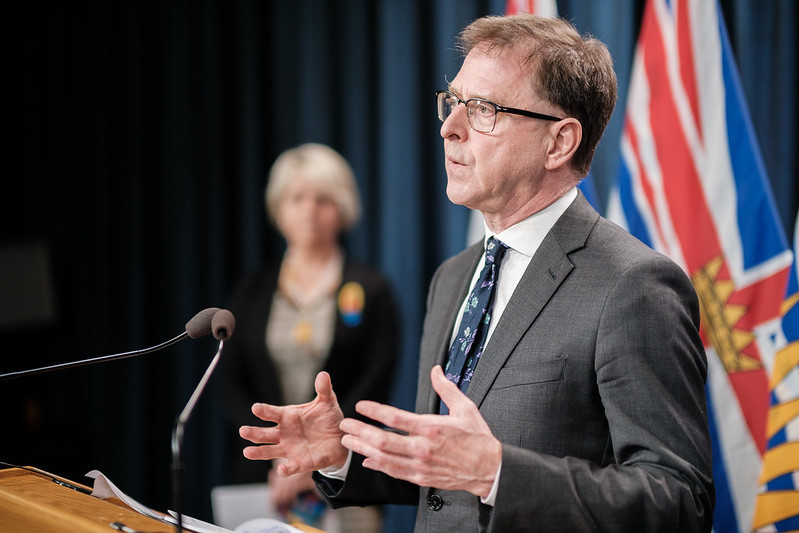
It began before the report’s release with the hiring of Dawn Thomas, a member of the Snuneymuxw First Nation, as assistant deputy minister in charge of anti-racism work with the ministry, and the hiring of 32 Indigenous liaisons to support patients in the health-care system, a process which is mostly complete.
Five of those will be added to the Northern Health staff, Dix said earlier this year. But reports from The Tyee and others suggest these new liaisons may be displacing existing cultural safety teams in Island Health and Providence Health, a partner of Vancouver Coastal.
When asked about this, Dix said the changes were Indigenous-led by Thomas and “transformative.”
B.C.’s medical bylaws — multiple pieces of provincial legislation that govern obligations and responsibilities to patients at all levels — are also under review by the ministry and regulatory colleges for health professionals have been contacted to begin anti-racism training development.
“A standard was set in the data that’s been put forward,” said Dix of the report and subsequent data overview. It’s now up to everyone in the health-care system to meet it, he noted.
The 2021 budget also allocates $59 million over the next three years to addressing anti-Indigenous racism and providing culturally safe care, particularly for mental health and substance use issues.
But there is no news on when a number of legislative recommendations made in the report, such as an Anti-Racism in Health Care Act and expanded whistleblower protection legislation to health-care workers, will be tabled.
When asked what had practically changed for Indigenous people seeking care in the five months since the report was made public, Dix said, “They can see the action we’ve taken. They can see Indigenous people are leading the response.”
“The challenge also is that these are urgent problems, and require both long-term solutions, and not just consultation [with Indigenous peoples], but co-management and co-leadership of those issues,” said Dix.
Little information on race and care complaints
While the provincial complaint board publishes annual reports summarizing care-quality concerns and recommendations to health authorities, the most recent report available is for the year ending March 31, 2019. The Health Ministry says the 2019-2020 annual report, which was due out in the fall, has been delayed due to the pandemic. It is currently expected this month, according to a spokesperson with the Ministry of Health.
In 2018-2019, the Patient Care Quality Review Board completed 75 complaint reviews, with 41 resulting in recommendations to health authorities. Two reviews were completed in the Northern Health Authority. The resulting recommendations involved emergency department wait times and the assessment of violence risks in patients and visitors.
Whether those complaints were race-related is unknown.
The Tyee requested a record of how many complaints were related to racism or filed by Indigenous patients in Northern Health but was told the board does not “formally capture either Indigeneity or complaints about racism” in its Patient Care Quality Reports.
The board says it has been thinking about collecting the information since last year’s investigation into racism in the B.C. health-care system. That process has not yet been formalized.
A similar lack of clarity and accountability on racism characterizes the B.C. health-care system, stalling even the few well-intentioned efforts being made more broadly, the Turpel-Lafond report found.
One of those is the San’yas Indigenous Cultural Sensitivity Training program, which has been completed by 34,585 health-care workers and officials in B.C. since 2009, according to a spokesperson with the Provincial Health Services Authority. It was developed and is delivered online by the PHSA’s Indigenous Health Team.
Initially intended to be mandatory, it is still a voluntary course for staff 12 years later.
About 4,439 of those who completed the program in the last 12 years have been employed by Northern Health Authority, but there’s no available data on how many of the region’s approximately 7,000 current employees have taken the training.
The training met criticism during the investigation into anti-Indigenous racism, which concluded that the number of employees who completed it was “miniscule.”
“In the 10-year period from 2009/10 to August of 2020, the Core ICS health module has been completed by an average of approximately 2,660 people a year, for a total of 30,489 people,” found the report. “This is a miniscule percentage of the approximately 200,000 people who currently work in health care in B.C., particularly when one considers the turnover in staff that has occurred during this time period.”
Poor accessibility and accountability for implementing and evaluating the course teachings has led to “very limited integration of San’yas with the training that each health authority currently offers,” the report reads.
The Northern Health Authority’s Collins says the health authority is working to facilitate employees to take the cultural safety training, as well as engage Indigenous individuals and communities and to develop cultural resources for health practitioners.
Henry Morgan is from the Kispiox First Nation and works with those experiencing homelessness and addiction in Prince George, occasionally accompanying them to medical appointments. He says high staff turnover at training hospitals, such as the University Hospital of Northern B.C., are partly to blame for the dismissive attitudes of some hospital employees.
“I believe our health system rotates people so fast that they’re not able to sustain that practice of cultural sensitivity,” he says. “They don’t understand our cultural ways.”
Once, Morgan says, he drove five hours each way to bring his father to an appointment in Prince George. The specialist briefly examined his dad before declaring nothing was wrong. When Morgan pressed him about an explanation for his father’s symptoms, the doctor became defensive and curt.
They returned home to Kispiox without answers.
“Inequality is there. Is it ignorance or is it racism?” Morgan says. “It’s a combination, when you think of it, right?”
Others agree that while they know their care was inadequate, it’s hard to pinpoint racism as the cause.
“They don’t say, ‘Oh, because you’re Indigenous, we’re going to pretend that you’re looking to get high off pills,’” Joanne says. “So it’s hard to tell, exactly, whether they’re just generally assholes or racist assholes.”
Each can recall times when health-care providers showed compassion and went above and beyond to provide care. Ketlo says her recent knee surgery in Prince George, when she was left largely unattended through excruciating pain, was “like night and day” from a previous knee surgery. Joanne describes her surgical team in Prince George as “fantastic.”
But they and others, like Thomas-Flurer, also recall looking around the ward and wondering why they were the only ones not receiving an adequate standard of care.
“You didn’t see them… in pain and crying,” Thomas-Flurer says about non-Indigenous patients she was roomed with, adding that nurses were attentive and provided sufficient medication. “They would get pain medication right away.”
UNBC’s de Leeuw says when Northern Health Authority, its hospitals and its medical staff deny acting “with deliberate racial indifference” in legal filings, that may be true.
“We are all indoctrinated in systems that devalue Indigenous lives,” she says. But inherent biases aren’t going away as long as people deny they even exist, she says.
Instead, she says, it’s time to acknowledge the reality and work to unravel the colonial history that laid the groundwork for systemic racism in all sectors, nationwide — not least of which is B.C.’s health-care system.
“I work in a faculty of medicine. I don’t think health-care providers are inherently bad people. I think all of us, myself included, are steeped in a certain orientation to the world. It doesn’t make us bad people. It just means we have to spend time working against the biases that are natural in us,” she says.
“To be honest, I find it super compelling to work on.”
When asked whether his action has been significant enough given the continued reporting of experiences of racism that harm Indigenous people’s health and lives, Dix said the province isn’t “going to overturn the legacy of systemic racism, and the legacy of colonialism as it affects our health-care system, right away. But it is our obligation to do so.”
Immediate does not mean overnight, he added. He hopes Indigenous people will “come to our hospitals when you’re sick and get care” as the work continues.
In the meantime, Indigenous patients are left gambling on what quality of care they will receive when accessing health care in the region and facing tough decisions about travelling south for treatment. For some, their fear of returning for treatment is adding to health risks as they delay followup appointments.
Thomas-Flurer is one person who says she’s still experiencing symptoms but is too “scared and reluctant” to return to the hospital.
“I’d rather die,” she says. “I’d rather die than go through that again.” ![]()
Read more: Indigenous, Health, Rights + Justice


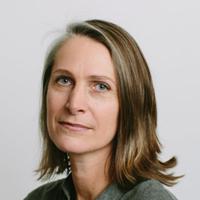

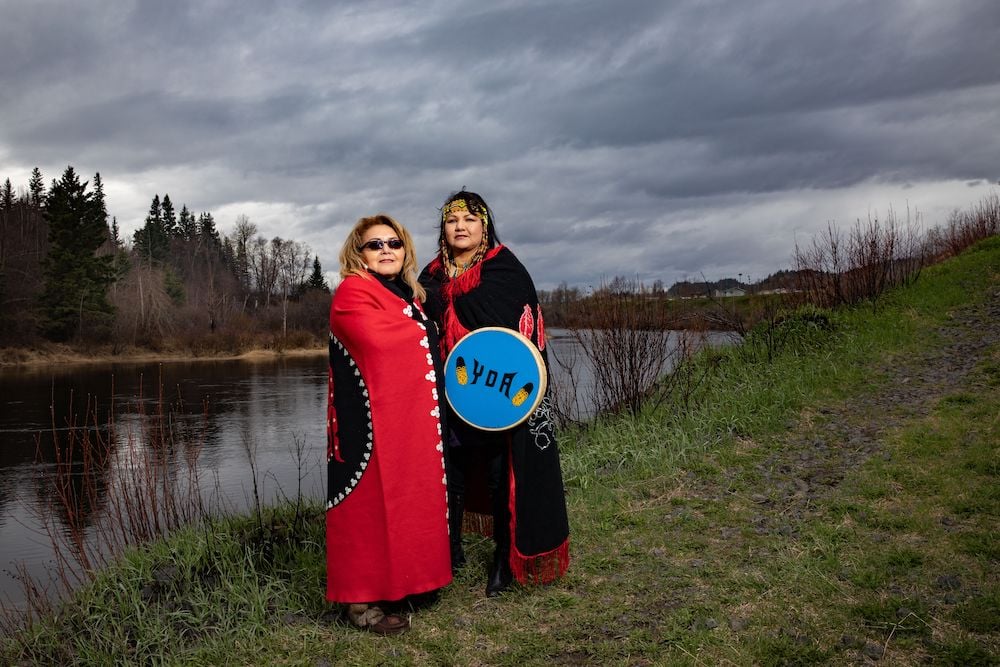












Tyee Commenting Guidelines
Comments that violate guidelines risk being deleted, and violations may result in a temporary or permanent user ban. Maintain the spirit of good conversation to stay in the discussion.
*Please note The Tyee is not a forum for spreading misinformation about COVID-19, denying its existence or minimizing its risk to public health.
Do:
Do not: